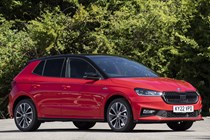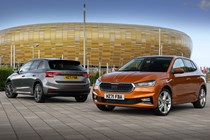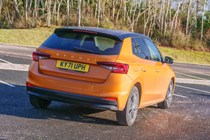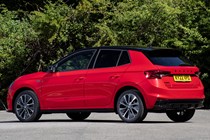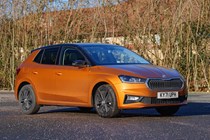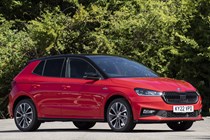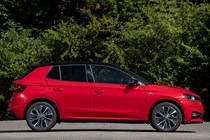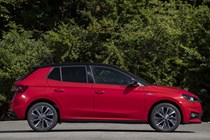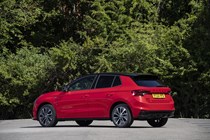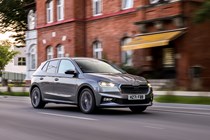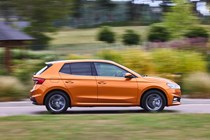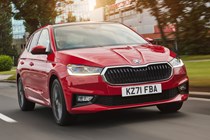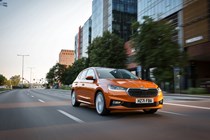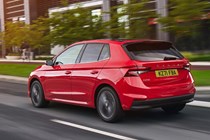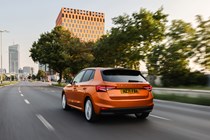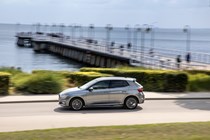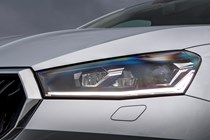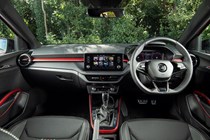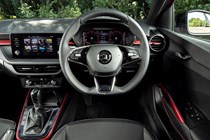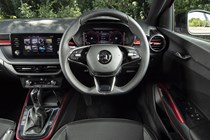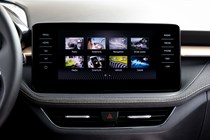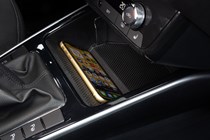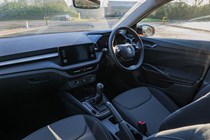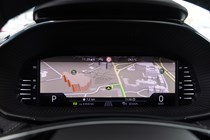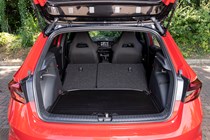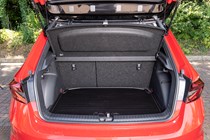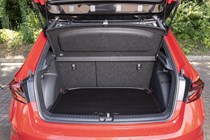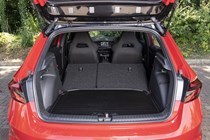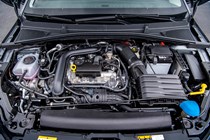
Skoda Fabia engines, drive and performance
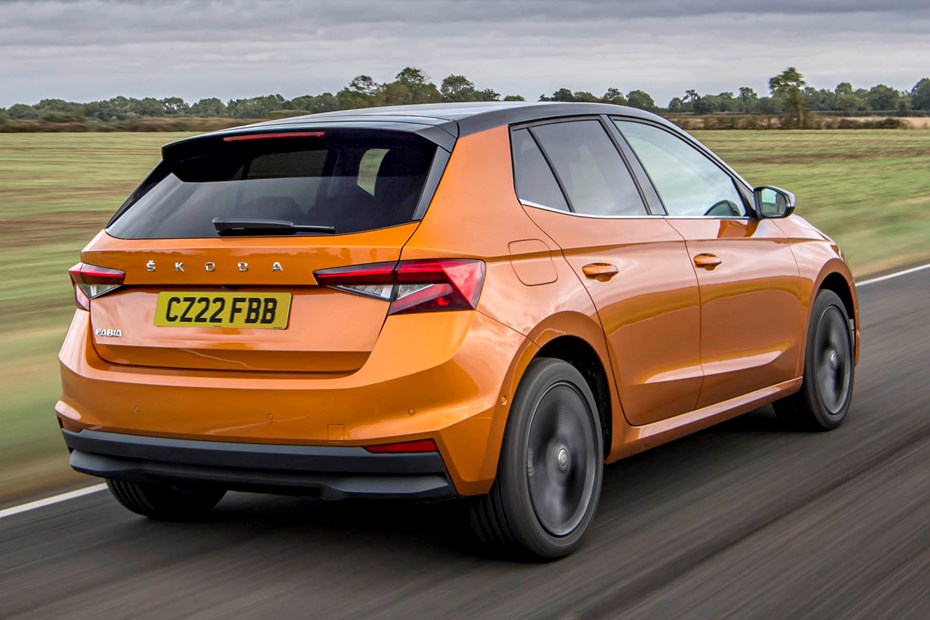
- Petrol engines only
- Some with turbos, some without
- Manual and auto gearbox options
Petrol engines
The Skoda Fabia offers fewer choices in the engine department than its rivals. You get a simple range of non-hybrid petrol engines, kicking off with a naturally aspirated 1.0-litre three-cylinder unit 80hp. There are two turbocharged versions of the same engine, though, serving up either 95hp or 110hp. At the top of the range, there’s a 1.5-litre four-cylinder unit with 150hp.
Lower-powered models come with a five-speed manual transmission as standard, while the 110hp model gets a six-speed ‘box and the option of a seven-speed automatic. The automatic is fitted as standard on Fabias powered by the 150hp 1.5-litre petrol engine.
The 95hp manual and 110 automatic are quieter than before, with plenty of sound deadening to ensure low noise levels. The 95hp engine always felt eager to perform in the outgoing model and we’re pleased to say it’s retained that level of urgency with this new car. This continues to feel like the sweet spot in the range, balancing usable performance with low running costs. It’s the one to go for, in short, and was under the bonnet of our test Fabia we had on our long-term fleet for six months.
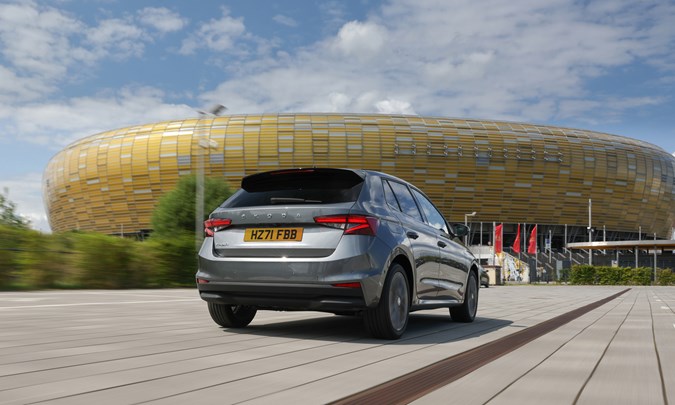
The 110hp engine with the seven-speed automatic gearbox responds to throttle inputs well enough from stationary but takes a long time to shift down. You can select manual mode using the gearlever, while Sport mode will hold onto gears longer but the delayed response means it’s not as spirited to drive as the manual.
As a result, this 110hp automatic doesn’t seem that much quicker than the 95hp manual. In fact, it feels a little laboured in comparison. If you drive in a relaxed manner, it’s fine, but ask for more and you may be left a little disappointed.
If you value horsepower, the 1.5-litre Monte Carlo will be more up your street. But, to be honest, we’re not sure whether it’s worth bothering with. Yes, its 150hp and 250Nm of torque as useful when joining a faster road or overtaking – but it never feels like an especially quick car and it certainly won’t trouble true hot hatchbacks like the Hyundai i20 N or Volkswagen Polo GTI.
The 1.5-litre engine is also coarser and noisier than the 1.0-litre units. We wouldn’t spend our money on it, especially since you can’t have any real fun with the standard-fit automatic gearbox.
What’s it like to drive?
- Very comfortable ride for a small car
- Handling is accurate and safe
- Lacks the fun factor of a Renault Clio
Comfort has always been the name of the game for the Skoda Fabia but, much like the latest generation Octavia, it feels like this car has been given a somewhat firmer ride. That’s not strictly a negative thing, though. We found it rolled around less when cornering, which can be a conversely uncomfortable feature on a car with soft suspension.
It’s still good around town when dealing with tarmac defects and speed bumps, but there’s a bit of fidgetiness on the motorway. Then again, that might be down to the Colour Edition trim’s 16-inch wheels (lower spec cars get 15s) so that’s something to consider if you do a lot of miles.
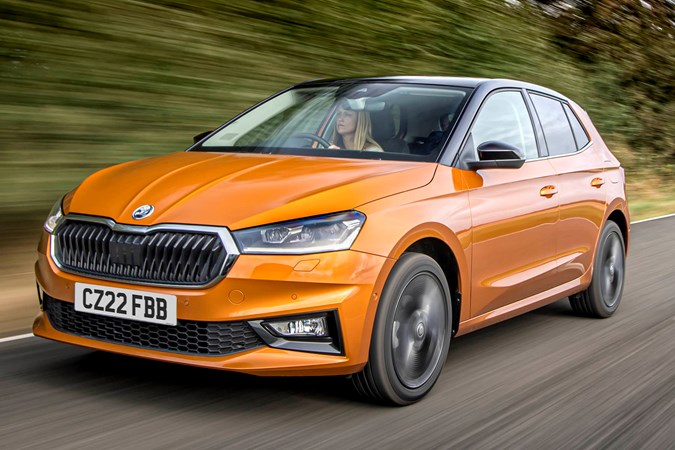
Larger still are the 17-inch rims on the Monte Carlo and the 18-inch options. They’re good-looking alloys but we found they put a rougher edge onto the ride that’s not backed up with fantastic handling.
The Fabia’s steering is a little numb, too. The setup is quite direct, but the lack of feedback doesn’t instil a great deal of confidence to stick the car’s nose hard into corners. On the flip side, that encourages you to drive more sensibly and allow your wallet to reap the benefits of Skoda’s efficient engines.


